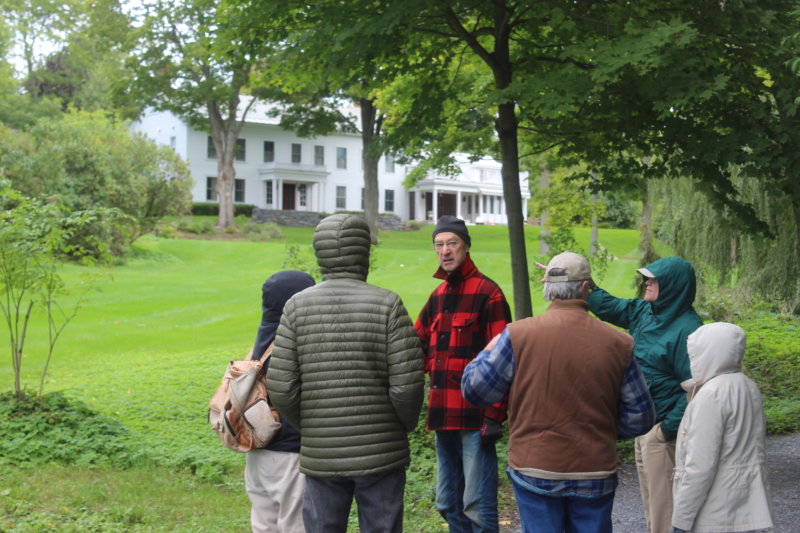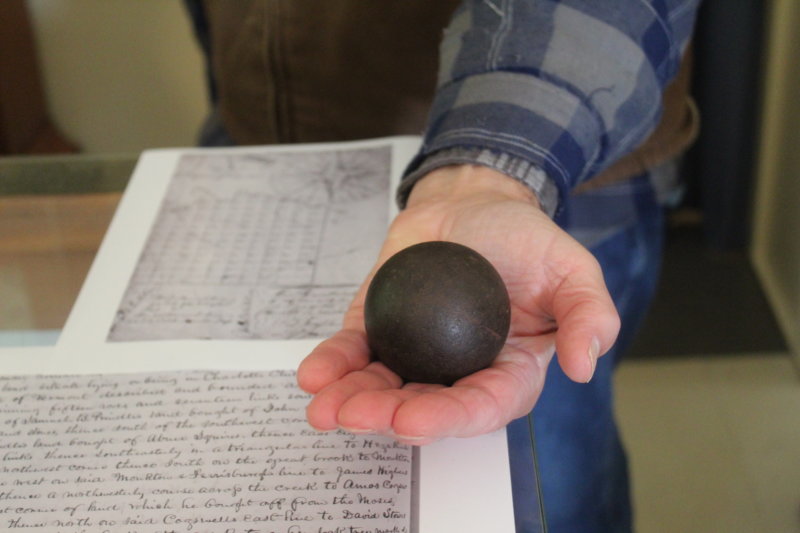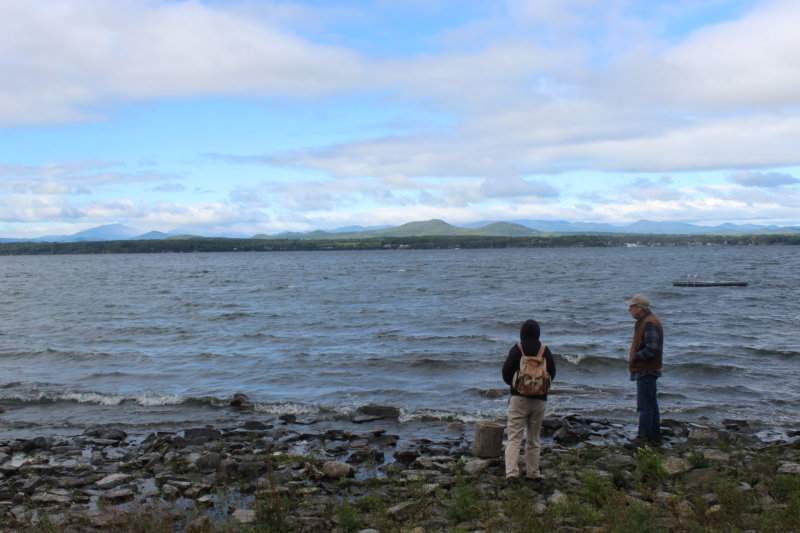A trip back to when Charlotte was a portal to the west
Ever wonder why Ferry Road takes such a sharp left turn as you are headed west shortly before you reach the ferry?
If you miss this turn and keep heading straight at more than 50 mph, you’ll likely be fishtailing because you’ve suddenly hit a gravel road named Wings Point Road.
Following the gravel road here west and then to the south will lead you to a small group of homes on what is now known as Wings Point. Years ago, it was known as McNeil’s Point.

Bob Witt says he hasn’t traveled much, and now that he’s retired, he’s even happier to stay at home in Indiana, but a vacation trip to Charlotte was a dream he’s had for years.
He and his wife Stephanie joined his childhood friend from South Bend, Rick Garnitz and his wife Signe for a trip to New England with the highlight being a visit to the old homesite and the ferry his ancestor Charles McNeil ran on the Lake Champlain peninsula that for some years bore the name of this branch of his family.
So, on the morning of Friday, Sept. 23, the two couples found themselves as part of a group of about 10 being shown around the point where Charles McNeil built his home in the early 1790s. The group was led by Charlotte historian Dan Cole and Tom Bates, who owns a home a couple of doors down.
Witt said the trip to visit his family’s Charlotte roots has been on his bucket list for years, but during the past year or so he’s been communicating with Cole regularly, waiting to fly to Boston until COVID didn’t seem such a threat in the small, enclosed space of an airline.
“It was just a tremendous time. I’m so glad I made this trip,” Bob Witt said.
John McNeil, Charles’ father, purchased the land from Ethan Allen, leader of the Green Mountain Boys and one of the founders of Vermont.
Both Charles and his brother, who was also named John McNeil, started ferries. John McNeil’s ferry ran from the peninsula that’s now known as Cedar Beach on the south side of the cove that’s still known as McNeil Cove. Apparently, the competition between the two brothers was heated, but eventually Charles McNeil’s ferry won out.

Maybe John McNeil was distracted by his other duties. In 1787, he became Charlotte’s first town clerk.
Initially, the ferries were powered by sail, but these were replaced by horse ferries. There were two different kinds of horse ferry. On one, horses walked on a treadmill to supply power. The horse ferries on Lake Champlain had a horizontal wheel and six horses — three on each side — turned a large disc which transmitted power to a sidewheel paddle.
It was hard work for the horses and dangerous. Occasionally the planks would break which would mean a broken leg for a horse, William Wallace Higbee wrote in one of his essays collected in Around the Mountain.
“The fuel was the whip and an increased demand for speed meant more energetic application of rawhide,” Higbee said.
Between the northwest end of the Burlington breakwater and Lone Rock Point, the remains of an old horse ferry are submerged in Lake Champlain, according to the Lake Champlain Maritime Museum’s website. The sunken ferry is 63 feet x 23 feet. The museum has a half-sized replica of a horse ferry.
Higbee said McNeil’s was a happening place for the time because, besides the back-and-forth crossings of the ferry, a steamboat stopped at least twice a day and sloop-rigged canal boats transporting all kinds of goods up and down the lake were constantly stopping.
The sloop-rigged canal boats sailed south to the Champlain Canal. At Whitehall, N.Y., where the canal begins, the sails were taken down to make it through the canal. At the end of the canal, the boats were towed by tugboats to New York and markets to the south. On their return trip, the sloop-rigged canal boats’ sails were re-rigged at Whitehall.
Because it was so critical in the early 1800s to commerce and travel to the “West,” which in those days was Ohio, Higbee said, “‘McNeil’s’ was a household word, long to be remembered.”
Higbee waxes poetic about the flux of people who headed west towards the sunset via McNeil’s Ferry, pursuing the American dream of better opportunities: “Many a longing eye looked back over the three miles of blue water to catch a last glimpse of its rocky shore, for over there were the migrants’ parents and friends, old homes and tender memories.”

On the day of the Witts’ visit to the site of the old ferry, the wind was blowing and the lake was roiling with waves, but the day before when the water had been calmer and the level lower because of drought, Libby Laino said she could see the old timbers of the ferry dock through the water at the lake’s edge. Laino and her family live in the home Charles McNeil built on the gently sloping hill above the ferry.
Next door a large tavern was built in the 1830s that is now a beautiful, spacious home.
The grassy but barely passable byway that runs in front of these homes is a remnant of what was once a bustling road, a major artery of commerce and travel for Charlotte. Down this road came the butter and cheese the town was known for in those days, destined for markets in other states.
Before leaving town, the group stopped by the Charlotte Museum where Cole showed them a cannon ball that had been fired at Witt’s ancestors.
During the War of 1812, the McNeils and their neighbors had gathered on the banks at the ferry and hurled insults at the British sailing south for battle. After losing the battle, as the boats headed back north, the defeated yet infuriated sailors fired their cannons at their antagonists.
Probably before 1820 Charles McNeil was delivering lumber to Trois-Rivières, Quebec, when he got sick and died, Cole said. His wife and daughters were not able to keep the business running and the property was foreclosed on.
In 1850, the property was bought by Nicholas Wing. He owned it almost until the 1900s. When the property was sold, the Wing name stayed on.
In the 1830s or 40s, Champlain Transportation made the switch to steam-powered ferry boats and moved the business a short way south to a spit of land where the Charlotte Ferry operates now — a ferry you have to get to by slowing down, hopefully, and making a sharp left turn.

